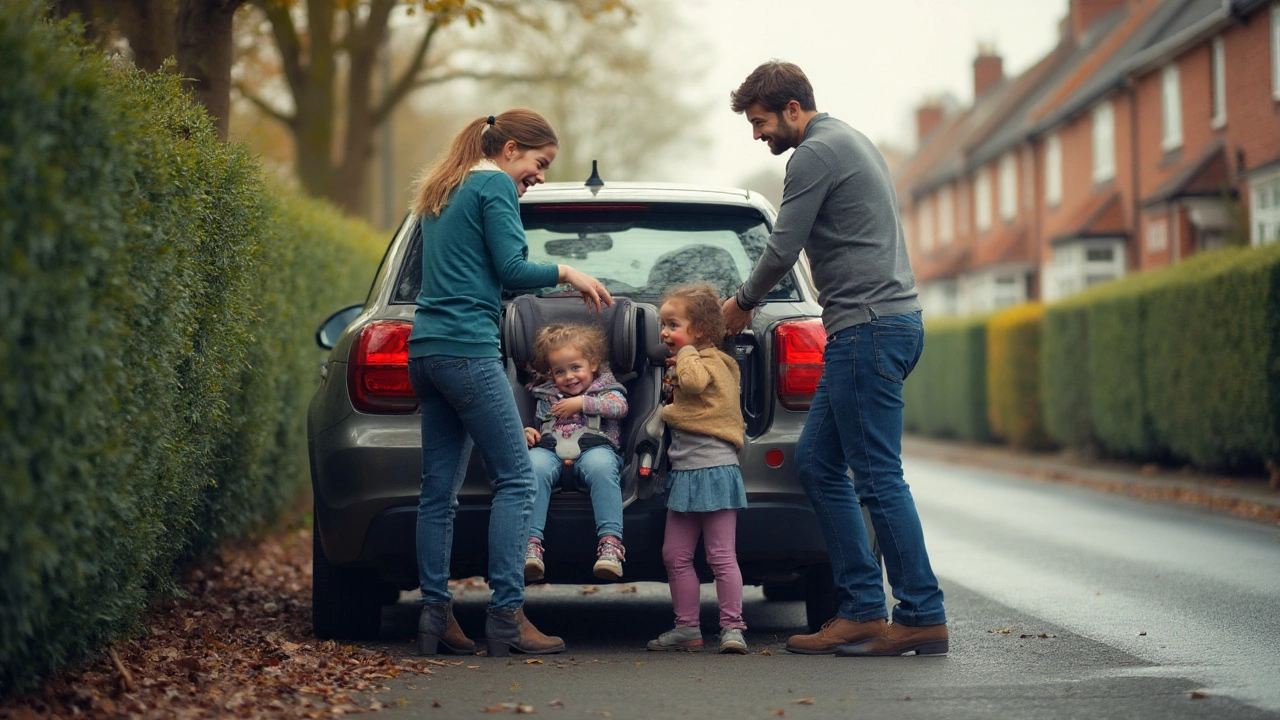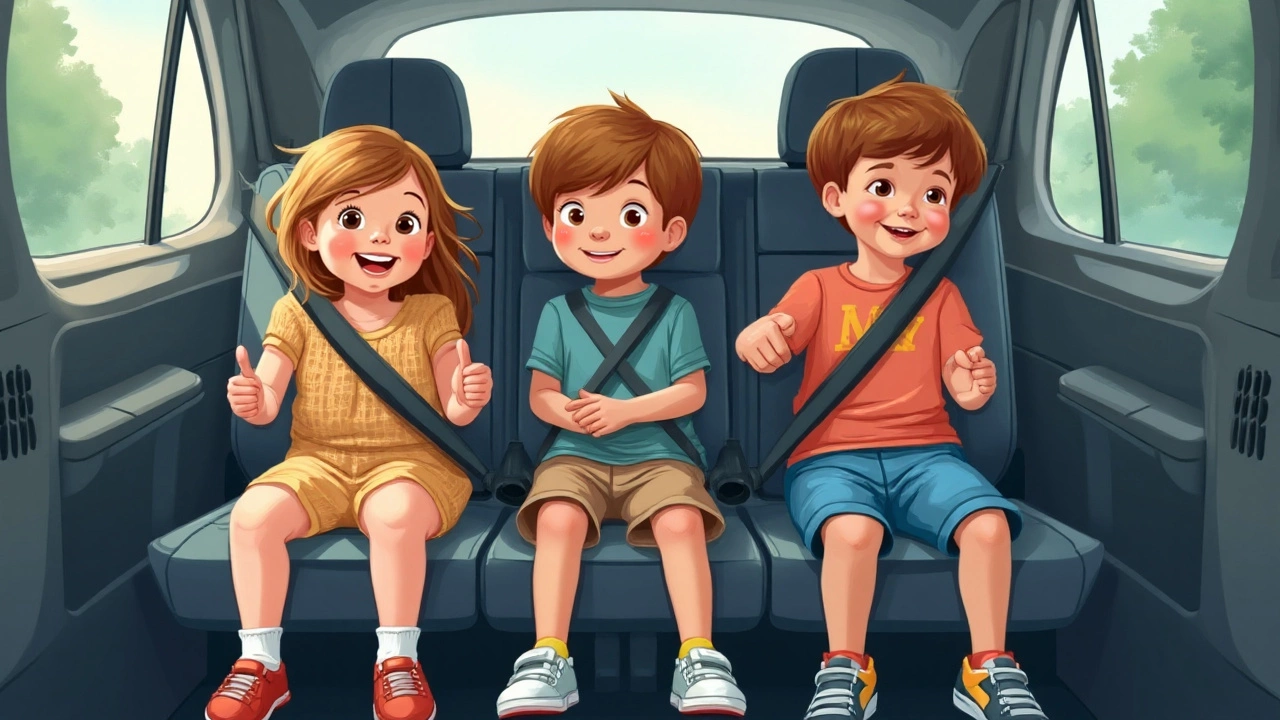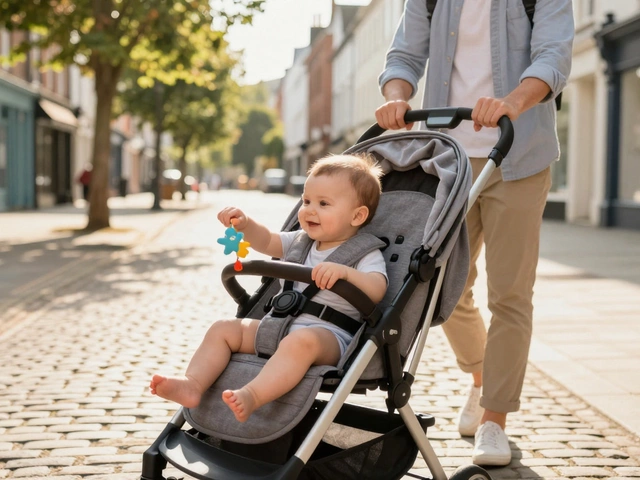
Ever seen a seven-year-old squashed into a car seat and wondered, “Don’t they look a bit too big for that?” Or maybe you’ve watched a neighbour strap their child into a booster when yours is only half their size and thought, “Am I missing something?” Honestly, switching to a booster seat might sound simple, but the rules are not as obvious as you might expect. The linchpin isn't just age or height, but your child’s weight—and getting it wrong can have real safety consequences. Ready to sort out fact from fiction?
Understanding UK Laws: Weight, Height, and Age for Booster Seats
The UK car seat rules don’t just serve as annoying red tape; they’re based on crash data and medical science. Here in Bristol, I’ve heard parents swapping all sorts of numbers at playgroup, but it always comes back to three main factors: weight, height, and age. The legal bottom line? Your child must use a child car seat until they are either 12 years old or 135cm tall, whichever comes first. But—here’s the kicker—the type of car seat changes as they grow.
For booster seats, the magic number is 15kg. UK law says children can use a booster seat (group 2/3) once they hit this weight, and up to 36kg. But before hitting 15kg, smaller kids should still be buckled into a harnessed seat. Booster cushions (the plain seat pads without side protection) can only be used if the child is at least 22kg and older than 125cm. This detail catches loads of parents off guard.
Check this quick breakdown for visual learners:
| Car Seat Group | Weight Range | Approx. Age |
|---|---|---|
| 0+ | 0–13kg | Birth–12/15 months |
| 1 | 9–18kg | 9 months–4 years |
| 2/3 (Booster) | 15–36kg | 4–12 years |
So, to answer the big question: most kids are ready for a booster seat once they’re at least 15kg (usually around age 4, but always check the scales), AND they can sit properly without slouching or pushing the seatbelt under their arm. It honestly depends on the child—my own son, Callum, shot past 15kg before his fourth birthday, whereas his best mate didn’t hit it until closer to five. Each child grows at their own pace.
Why Weight Matters More Than Age or Height
If you hear, “We switched as soon as she turned four,” it’s missing the point. Weight matters most because car seats use harnesses that protect small bodies, but boosters rely on the car’s seatbelt. If a child is too light for a booster, the seatbelt sits too high on their tummy or neck—not where it’s supposed to. That could make injuries much worse in a crash. Ever tried running in heels two sizes too big? Same idea—if something doesn’t fit properly, it can’t protect you.
This weight-first approach isn’t just a UK quirk. Across Europe and the US, research from the European Transport Safety Council finds that the risk of severe injury drops dramatically for kids who stay in a harnessed seat until the right weight. A Swedish study from Folksam insurance showed children in boosters before 15kg were twice as likely to have abdominal injuries in a crash compared to those still in harnessed seats. Real stories: a local paramedic here in Bristol said she’s seen kids walk away from nasty smashes without a scratch, all because their parents waited for the right seat at the right time.
Kids often whinge about their “baby seat” if their friends have boosters, but their bodies need the protection. Remember, you’re not being difficult—you’re actively keeping them safe. When the time comes, you’ll know, but don’t let peer pressure or birthday numbers make you rush it.

Signs Your Child Is Ready for a Booster Seat
So your child’s creeping up to 15kg, maybe even tipping the scales one morning before school. Great! But that’s not the only thing to check. There’s an ideal checklist that can save you from an upgrade too soon:
- Is your child at least 15kg? Not just “almost,” but definitely 15kg or over.
- Can they sit with their back against the seat, knees bent at the edge, without slouching?
- Do they keep the seatbelt in the correct position—low on the hips and across the shoulder—not behind their arm or back?
- Can they sit properly the whole trip? Fidgety kids sometimes twist, so check if yours can stay put.
- Do their ears fit below the top of the seat or headrest?
When I first moved Callum to a booster, I did a trial “cinema test”—could he stay sitting the right way through an entire animated movie, with popcorn as a distraction? If he could do that, I knew he could handle a car trip. Don’t rush. It’s better to err on the side of caution—booster seats are designed for kids who’ve outgrown their harnessed seat by both weight and maturity.
Another pro tip? Try not to buy seats just by age labels or sibling hand-me-downs. Harnesses should fit snugly, and many top-brand car seats let you adjust the harness height as your child grows, giving you an extra cushion of safety until they really are ready for the big-kid booster.
Tips for Safe and Comfortable Booster Seat Use
Once you’re certain your child has hit the big 15kg and ticks all the boxes, picking and using the booster right makes all the difference. Here’s how you make sure your little passenger is as safe and comfy as can be:
- Choose a high-back booster whenever you can. These provide side-impact protection and help properly position the adult seatbelt. Plain booster cushions (backless) are legal only for kids over 22kg and taller than 125cm. High-back seats also keep sleepy heads from flopping when your child nods off—which always seems to happen five minutes from home.
- Install the seat correctly. Sounds basic, but an AA roadside survey found 51% of child car seats in the UK are fitted incorrectly. Always push the seat firmly against the car’s backrest and route the seatbelt as the instructions show. If in doubt, many retailers offer free car seat checks.
- Double-check the seatbelt fit every time. The lap belt must sit across your child’s hips (not their tummy), and the shoulder belt must rest across their shoulder, not touching the neck or face.
- Watch for winter coats. Puffy jackets can create dangerous slack. Get your child to wear a thin, snug layer and put their coat over the harness or belt after they’re strapped in, if necessary.
- Encourage responsibility, but don’t expect perfection. Some kids need reminding not to tuck the shoulder belt under their arm or behind their back. Build a habit—maybe make it a “buckle check” before starting the engine.
- Upgrade only when needed. Don’t be tempted by more grown-up looking seats before your child’s ready. The safety benefit comes from the proper fit, not just the look.
Here’s something few parents realise: keeping your child in a high-back booster until 150cm or about 12 years old offers extra protection, even after the legal minimum. Countries like Sweden and Germany have higher thresholds, and they see lower child injury rates on the roads. Car journeys in the UK are statistically safer than ever, but making these tiny choices adds up.
Every car seat switch feels a bit like closing a chapter—one step closer to your child’s independence. Gavin still jokes about how he needed a booster until he was ten because he was a late grower. The important thing is to trust the data, trust your child’s body, and trust your gut. If you’re ever unsure, pop into your local car seat specialist and ask for a fit check—most will do it with a smile and a cup of tea. That peace of mind, honestly, is priceless.






